Acting Student and Bioengineering Alumna Awarded Soros Fellowship for New Americans
Awards & Accolades
By:
Published Date
By:
Share This:
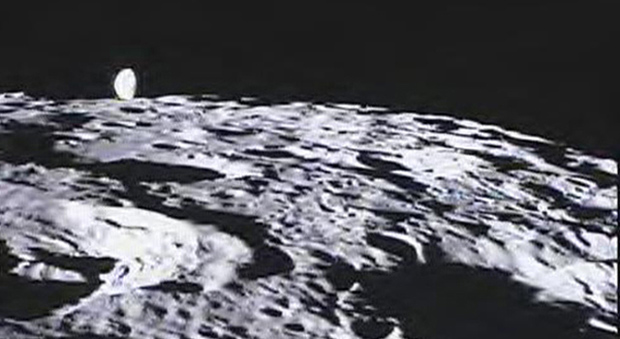
The earth rising over the moon, as captured by the MoonKAM cameras. Credit: NASA
Students in more than 2,700 schools from 52 countries have started requesting pictures in the past few weeks of specific areas of the moon from two spacecraft orbiting the Earth’s satellite. But little do they know that their requests go to an operations center located on the campus of the University of California, San Diego manned by undergraduate students, most of them engineering majors.
The MoonKAM mission kicked off March 12 and is an outreach project of Sally Ride Science, a science education company headed by the first American woman in space, who also is a former UC San Diego physics professor. The mission consists of eight cameras, installed on the twin GRAIL spacecraft orbiting the moon. The spacecraft’s primary goal is to map the moon’s gravity field in order to unlock mysteries about its origin and composition, from crust to core.
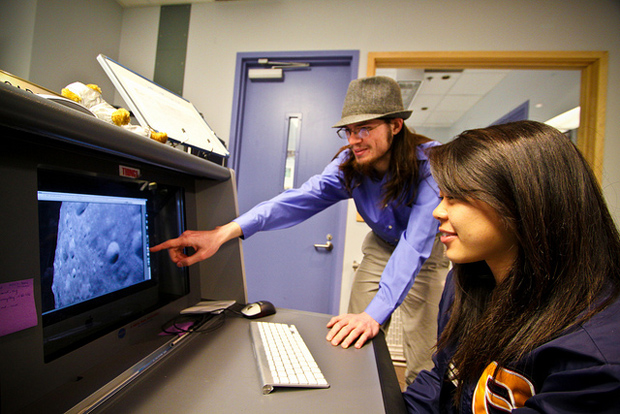
Kevin Crossan and Veronica Wu are two engineering undergraduate students working on the MoonKAM mission.
But GRAIL is also NASA's first planetary mission to carry instruments fully dedicated to education and public outreach. The mission was set to run through June, but has recently been extended until December.
"MoonKAM is based on the premise that if your average picture is worth a thousand words, then a picture from lunar orbit may be worth a classroom full of engineering and science degrees," said Maria Zuber, GRAIL mission principal investigator from the Massachusetts Institute of Technology in Cambridge, Mass. "Through MoonKAM, we have an opportunity to reach out to the next generation of scientists and engineers."
The project offers unique opportunities for middle school students, who get to request and receive images of the moon, and for undergraduates at UC San Diego, who essentially are the mission’s staff members.
“Students gain experience on everything, from very, very powerful data applications, to management skills and responsibility,” said Chris “Taz” Harrison, the Chief Technology Officer for MoonKAM, who also is a UC San Diego employee.
“Software that is mission critical was written by our students,” Harrison said.
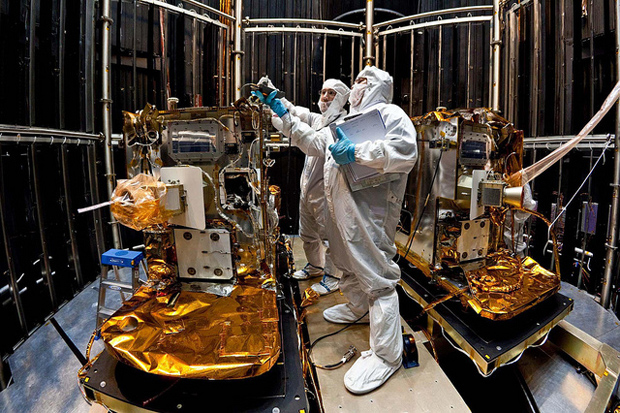
Researchers work on the GRAIL spacecraft before launch. Credit: NASA
Kevin Crossan, a computer science major, is one of those students. His software takes the photo requests from schools and helps determine the best orbit to take the pictures. Then, it sets a schedule for taking the photographs, which is uploaded to the GRAIL spacecraft. There’s more. “Getting photos down from a spacecraft isn’t as simple as you might think,” Crossan said. All the data comes back from GRAIL in its raw form. The software checks the data for errors and for image corruption, then converts it into actual photographs.
“This project is really important to me because I’ve worked on it for a long time and I’ve written a lot of software for it,” Crossan said. “I’m excited that it has so far been a successful project and we’ve actually gotten pictures back.”
“You’re the reason why everything works,” Veronica Wu, an aerospace engineering major, who also works on MoonKAM, told Crossan.
Wu said she too hopes to work for NASA. “I love robotics and spacecraft,” she said. Working on MoonKAM gave her the opportunity to develop her technical skills. She got to use powerful software that undergraduates usually do not have access to, she said. Wu is the leader of the MoonKAM orbits team. Her job is to build a model of the spacecraft orbits that is the basis of all requests on the MoonKAM website. Using image data from the GRAIL spacecraft, Wu and her team ensure that the MoonKAM models are accurate. “This is something I can apply in the future,” she said. For now, she is headed to Purdue University for graduate school.
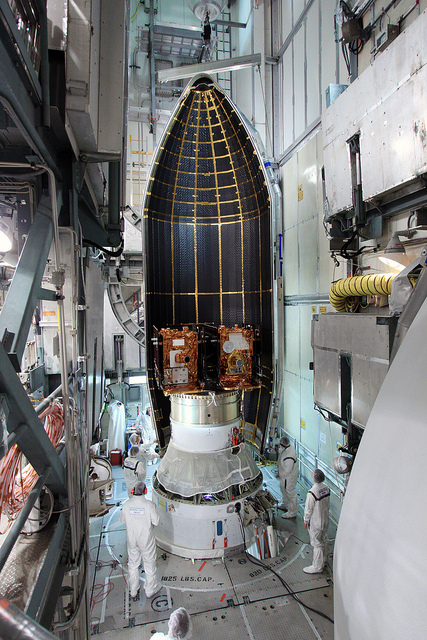
The GRAIL spacecraft before launch. Credit: NASA
There are 27 UC San Diego undergraduate students working on a variety of MoonKAM teams, said Harrison. The schools team is on the frontline, handling photo requests from students. The orbits team models when and where the photos can be taken. The mission operations scheduler, known as “MoOS,” creates a camera control file with instructions for each spacecraft. The scheduler also creates a download-and-delete file that grabs all the pictures from the spacecraft and moves them down to the ground. The payloads team then takes over, processing the pictures and then posting them on the MoonKAM website. The “Chiefs” team supervises the other four teams. Depending on the location middle school students want to photograph, it takes anywhere from two to three days to one month to get the images they requested.
The MoonKAM project was inspired by EarthKAM, which takes pictures of our planet from the International Space Station. But it is more complex, Harrison said. On the space station, astronauts are available to troubleshoot if something goes wrong with the camera. But the GRAIL Spacecraft are unmanned, so everything needs to be automated.
“We have had quite a few students who have worked with the program and have gone on to intern at NASA and JPL,” Harrison said, “In addition, many of the program alumni have gone on to work at a number of prominent technology companies and organizations.” By the way, most of the students currently working on MoonKAM are graduating this year, so Harrison will be recruiting for help soon.
In San Diego County, 22 elementary and middle schools and three community centers have registered to participate in MoonKAM. GRAIL’s twin satellites, named Ebb and Flow, launched from Cape Canaveral Air Force Base Sept. 10, 2011.
“What might seem like just a cool activity for these kids may very well have a profound impact on their futures,” said Ride. “The students are really excited about MoonKAM, and that translates into an excitement about science and engineering. We’re thrilled that educators around the world have really embraced this program.”
Sally Ride is not the only astronaut with ties to UC San Diego. Another is UC San Diego alumna Megan McArthur, Ph. D. ’02. McArthur served as a Mission Specialist aboard the space shuttle Atlantis on a repair mission to fix the Hubble Space Telescope.
Read more about McArthur's adventures in space.
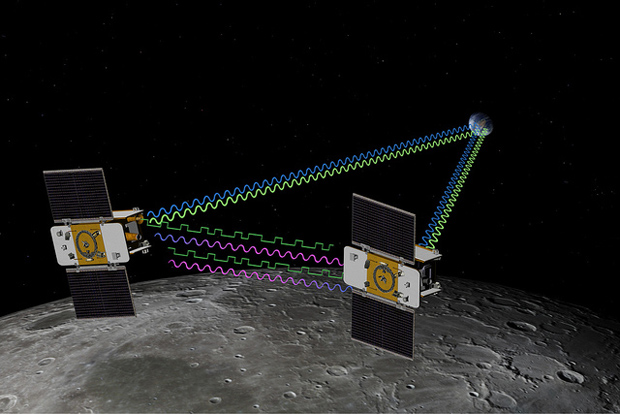
How the GRAIL spacecraft operates in orbit. Credit: NASA
Share This:
Keep up with all the latest from UC San Diego. Subscribe to the newsletter today.